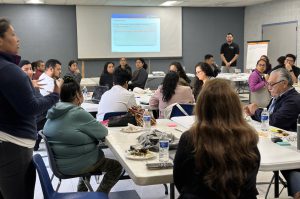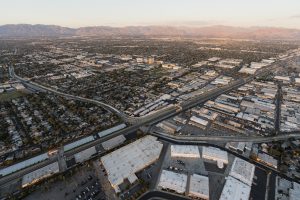
Advancing a Collaborative Agenda in Southeast LA
Advancing a Collaborative Agenda in Southeast LA In 2022, the California Community Foundation (CCF) launched the Regional Recovery Hub to strengthen place-based coordination in Los Angeles County
Variable Definitions:
Existing Tree Canopy Cover: The percentage of land area where the ground is covered from above by the leaves, branches, and stems of trees
Possible Tree Canopy Cover: The percentage of land area available for the establishment of tree canopy. This includes both existing tree canopy and area where improvements could be made to accommodate additional trees
Source:
Los Angeles County Tree Canopy Map Viewer by Tree People and the Center of Urban Resilience (CURes) at Loyola Marymount University (LMU)
Years Available:
2016
Other Data Notes:
Possible Tree Canopy includes areas that are theoretically available for the establishment of tree canopy. This category includes both pervious and impervious areas (asphalt or concrete surfaces, excluding roads and buildings) where improvements could ostensibly be made to accommodate additional trees.
Learn more about this data from the original source:
The Journey to the Los Angeles County Tree Canopy Map Viewer
Tree Canopy Cover
Citation:

Advancing a Collaborative Agenda in Southeast LA In 2022, the California Community Foundation (CCF) launched the Regional Recovery Hub to strengthen place-based coordination in Los Angeles County

In 2022, the California Community Foundation (CCF) launched the Regional Recovery Hub to strengthen place-based coordination in Los Angeles County regions that were most heavily impacted by
